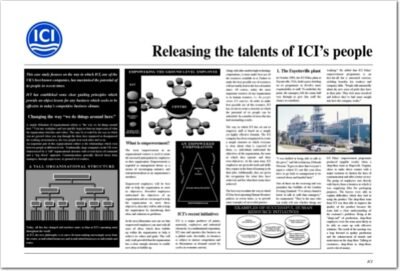Employment and unemployment are two crucial aspects of any economy. Employment refers to the number of people who are currently working and earning a wage, whilst unemployment refers to the number of people who are willing and able to work but are currently without a job. These two factors play a significant role in determining the overall health and stability of an economy.
High levels of employment indicate a strong and thriving economy, whilst high levels of unemployment can signal economic distress and instability. Understanding the dynamics of employment and unemployment is essential for policymakers, economists, and individuals alike, as it directly impacts the standard of living, social stability, and overall economic growth. In any economy, the goal is to achieve full employment, where everyone who is willing and able to work can find a job.
However, achieving full employment is often a complex and challenging task, as there are various types of unemployment and numerous factors that contribute to it. It is essential to understand the different types of unemployment, their causes, and the potential policy responses in order to effectively address this issue and create a more stable and prosperous economy for all.
Summary
- Unemployment refers to the situation where people who are willing and able to work are unable to find suitable employment.
- The main types of unemployment include frictional, structural, cyclical, and seasonal unemployment.
- Causes of unemployment can include technological change, globalisation, and economic recession.
- Policy responses to unemployment can include fiscal and monetary policies, as well as labour market reforms and training programmes.
- Unemployment can have a negative impact on the economy, leading to lower consumer spending, reduced tax revenues, and increased social welfare costs.
Types of Unemployment
Frictional Unemployment
The first type is frictional unemployment, which occurs when individuals are temporarily between jobs. This type of unemployment is often considered natural and even healthy for an economy, as it reflects the process of workers transitioning between jobs and seeking better opportunities. Frictional unemployment can also occur when individuals enter the workforce for the first time or re-enter after a period of absence. It is often short-term in nature and can be reduced through improved information about job vacancies and better matching of workers to available jobs.
Structural Unemployment
Another type of unemployment is structural unemployment, which arises from a mismatch between the skills of the workforce and the requirements of available jobs. This can occur due to technological advancements, changes in consumer demand, or shifts in the structure of industries. Structural unemployment can be particularly challenging to address, as it often requires retraining or re-education of the workforce to match the needs of the evolving job market.
Cyclical and Seasonal Unemployment
Cyclical unemployment is another significant type, which is closely tied to the business cycle. During economic downturns or recessions, demand for goods and services decreases, leading to a decline in production and layoffs. This results in a surplus of labour in the market, leading to cyclical unemployment. As the economy recovers and demand increases, cyclical unemployment tends to decrease. Finally, there is also seasonal unemployment, which occurs due to predictable fluctuations in demand during certain times of the year, such as in agriculture or tourism.
Causes of Unemployment

Unemployment can be caused by a variety of factors, both internal and external to the economy. One significant cause is technological change, which can lead to job displacement as automation and new technologies replace human labour. While technological advancements can lead to increased productivity and economic growth, they can also result in job losses in certain industries, leading to structural unemployment.
Globalisation is another factor that can contribute to unemployment. The increased interconnectedness of economies can lead to outsourcing of jobs to countries with lower labour costs, resulting in job losses in higher-cost countries. This can lead to structural unemployment as workers in affected industries may not have the skills or opportunities to transition to other sectors.
Economic downturns and recessions are also major causes of unemployment. During periods of low economic activity, businesses may reduce their workforce or shut down altogether, leading to widespread job losses. This results in cyclical unemployment, which can persist until the economy recovers and demand for labour increases.
Policy decisions and regulations can also impact unemployment rates. For example, minimum wage laws and labour market regulations can affect the cost of hiring workers, potentially leading to higher levels of unemployment, particularly among low-skilled workers. Additionally, government policies related to taxation, trade, and investment can have significant effects on employment levels.
Policy Responses to Unemployment
Governments and policymakers have several tools at their disposal to address unemployment and its various causes. One common policy response is active labour market policies, which aim to improve matching between job seekers and available jobs. This can include measures such as job search assistance, training programmes, and support for geographical mobility.
By helping workers acquire the skills needed for available jobs and connecting them with employers, active labour market policies can reduce frictional and structural unemployment. Another key policy response is fiscal stimulus during economic downturns. By increasing government spending or cutting taxes, policymakers can boost aggregate demand and stimulate economic activity, which can help reduce cyclical unemployment.
Additionally, targeted support for industries or regions that are particularly affected by job losses can help mitigate the impact of economic downturns on employment levels. Labour market reforms are also an important policy response to address structural unemployment. By improving flexibility in hiring and firing practices, reducing barriers to entry for new businesses, and investing in education and training programmes, governments can help workers adapt to changing labour market conditions and reduce structural unemployment.
Finally, trade policies and international cooperation can play a role in addressing unemployment caused by globalisation. By negotiating trade agreements that protect workers’ rights and promote fair competition, governments can help mitigate the negative effects of globalisation on employment levels.
Impact of Unemployment on the Economy
Unemployment has far-reaching effects on both individuals and the economy as a whole. For individuals, unemployment can lead to financial hardship, loss of self-esteem, and decreased well-being. It can also have long-term effects on mental health and social stability.
From an economic perspective, high levels of unemployment can lead to reduced consumer spending, lower tax revenues for governments, and increased social welfare spending. Unemployment also leads to a loss of potential output for the economy. When workers are unemployed, their skills and talents are not being fully utilised, leading to a decrease in overall productivity.
This can have long-term effects on economic growth potential and competitiveness. Additionally, high levels of unemployment can lead to social unrest and political instability, as individuals become disillusioned with the government’s ability to provide opportunities for work. Furthermore, persistent high levels of unemployment can lead to a phenomenon known as hysteresis, where long-term unemployment becomes entrenched in the economy.
This can result in a loss of human capital as skills deteriorate over time, making it more difficult for individuals to re-enter the workforce even as economic conditions improve.
Strategies for Reducing Unemployment

Reducing unemployment requires a multi-faceted approach that addresses its various causes and impacts. One key strategy is investing in education and training programmes to ensure that workers have the skills needed for available jobs. By providing opportunities for lifelong learning and upskilling, governments can help reduce structural unemployment and improve the overall adaptability of the workforce.
Promoting entrepreneurship and small business development is another important strategy for reducing unemployment. By creating an environment that supports new business formation and growth, governments can help generate new job opportunities and reduce reliance on large employers that may be more susceptible to economic downturns. Additionally, targeted support for industries that have high growth potential can help create new job opportunities and reduce reliance on declining sectors.
This can include investment in research and development, infrastructure projects, and green technologies that have the potential to create sustainable employment opportunities. Finally, fostering a supportive business environment through regulatory reforms and investment incentives can help stimulate job creation. By reducing barriers to entry for new businesses and providing support for innovation and growth, governments can help create a dynamic and resilient labour market that is better able to adapt to changing economic conditions.
Conclusion and Future Outlook for Employment and Unemployment
In conclusion, employment and unemployment are critical factors that shape the overall health and stability of an economy. Understanding the different types of unemployment, their causes, and potential policy responses is essential for addressing this complex issue and creating a more stable and prosperous economy for all. Looking ahead, it is clear that addressing unemployment will require a coordinated effort from governments, businesses, and individuals.
By investing in education and training, promoting entrepreneurship, supporting high-growth industries, and fostering a supportive business environment, it is possible to reduce unemployment levels and create more opportunities for meaningful work. However, it is important to recognise that addressing unemployment is not a one-size-fits-all solution. Different types of unemployment require different policy responses, and these responses must be tailored to the specific needs and challenges facing each economy.
By taking a comprehensive approach that addresses both short-term cyclical factors and long-term structural issues, it is possible to create a more resilient labour market that provides opportunities for all individuals to contribute meaningfully to the economy.
For more information on the impact of employment and unemployment on local businesses, check out this article on local SEO and the services it offers. Understanding how to attract and retain customers through effective local search engine optimization can be crucial for businesses in areas with high levels of unemployment.
FAQs
What are the different types of unemployment?
There are several types of unemployment, including frictional unemployment (temporary unemployment while searching for a new job), structural unemployment (due to changes in the structure of the economy), cyclical unemployment (caused by economic downturns), and seasonal unemployment (due to seasonal fluctuations in demand for labour).
What are the main causes of unemployment?
Unemployment can be caused by various factors, including technological advancements leading to job displacement, changes in consumer demand, globalisation and outsourcing, inadequate skills or education, and economic recessions or downturns.
What are some policy responses to unemployment?
Governments and policymakers can implement various measures to address unemployment, such as providing training and education programmes to improve skills, offering financial incentives to businesses to create jobs, implementing fiscal and monetary policies to stimulate economic growth, and establishing unemployment benefits and social safety nets for those out of work.
How does unemployment impact the economy?
Unemployment can have significant economic consequences, including reduced consumer spending, lower tax revenues, increased government spending on social welfare programmes, and potential social and political instability. It can also lead to a decrease in overall productivity and economic growth.
 Developing a career path in retail (PDF)
Developing a career path in retail (PDF)  Developing appropriate leadership styles (MP3)
Developing appropriate leadership styles (MP3)  Releasing the talents of employees (PDF)
Releasing the talents of employees (PDF)  Investing in training to safeguard the future (PDF)
Investing in training to safeguard the future (PDF) 